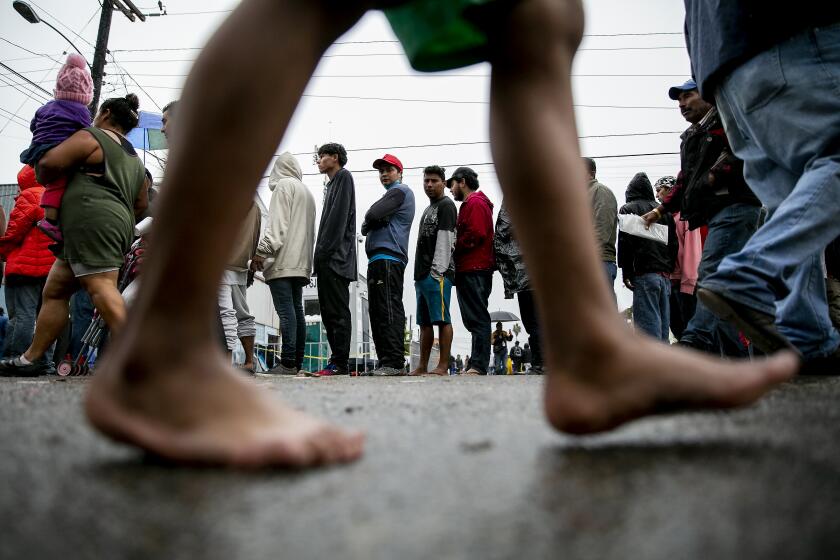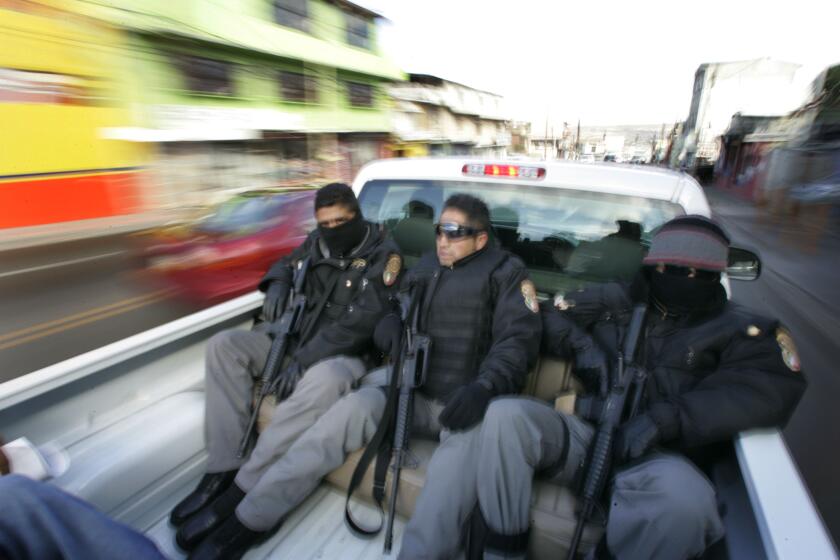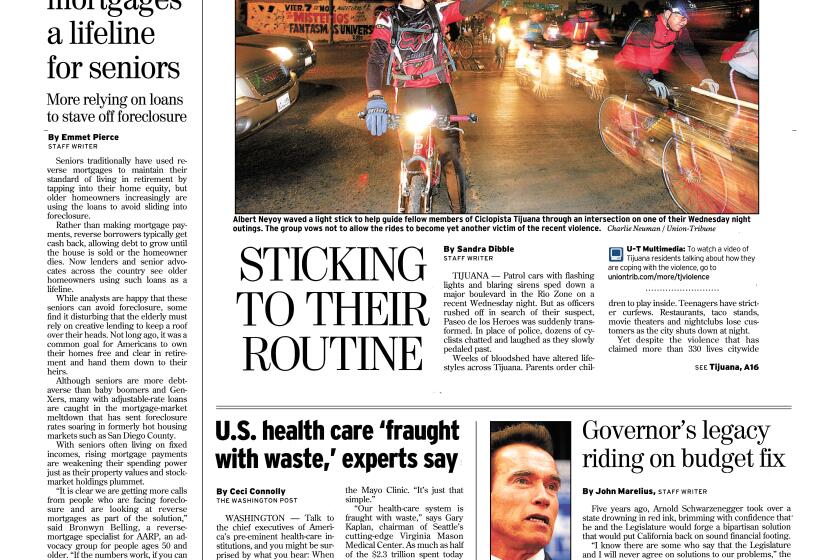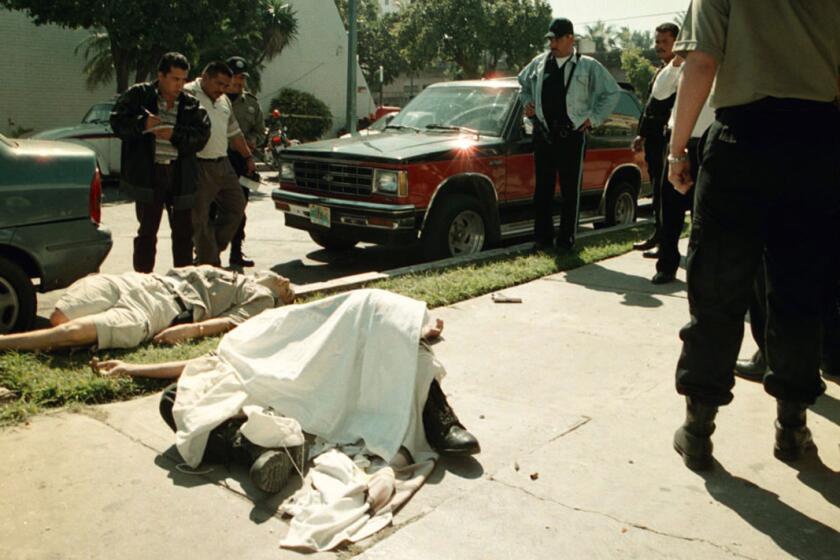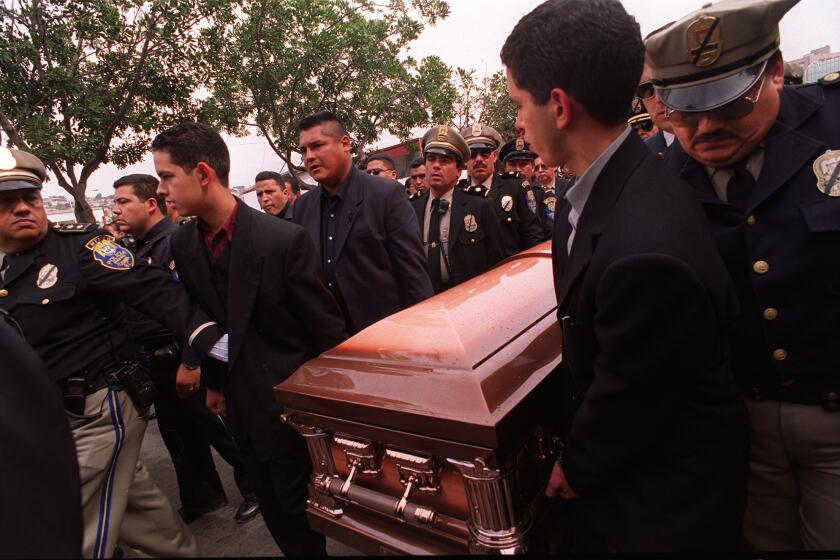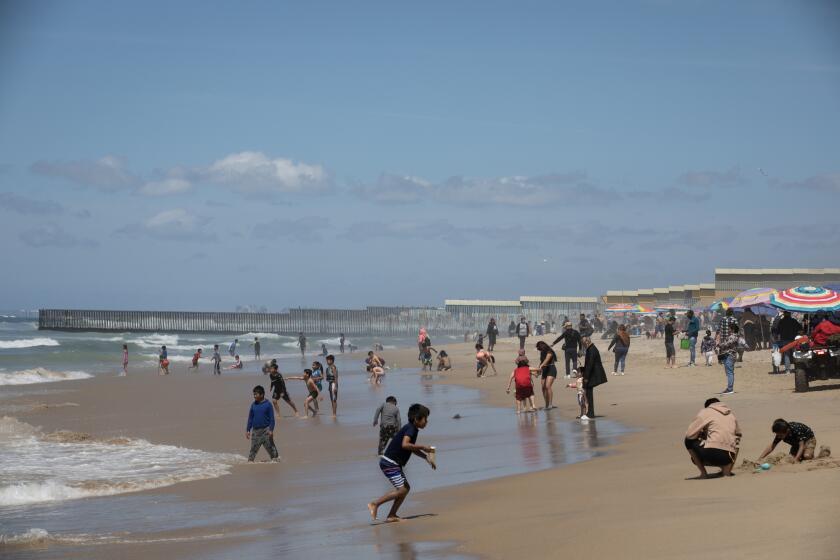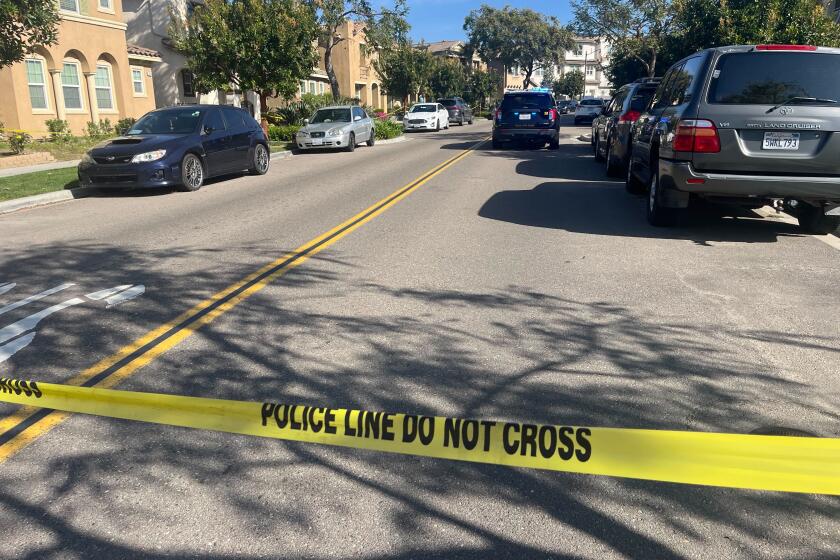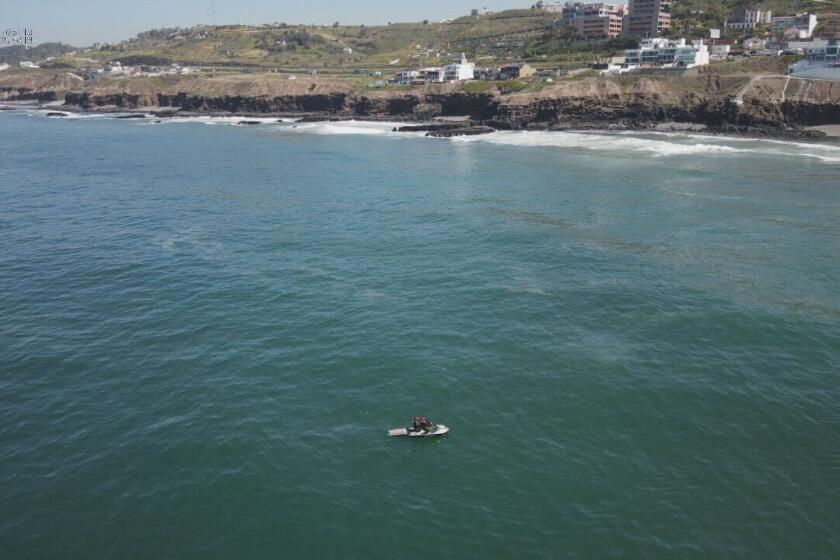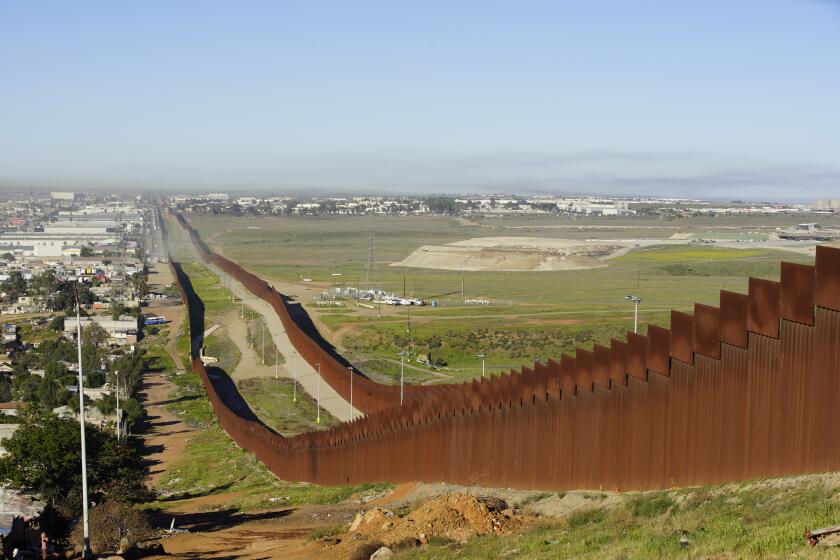Protecting the animals left behind in Border fire

In Potrero, where a wildfire caused evacuation of everyone, more help is needed than officials can give and residents have to help each other out.
As the Border fire spread flames and smoke through the dry rocky hillsides that rise near the Mexican border, humans were quickly evacuated. But many animals were left behind: everything from horses and cows to goats, sheep, pigs, rabbits, chickens, dogs, donkeys, llamas, emus and ostriches.
While hundreds of firefighters moved to control the blaze that by Saturday had swept over more than 7,600 acres of southeastern San Diego County, others focused on moving the animals to safer ground, or making sure those remaining had food and water.
The effort involved Humane Society specialists, officers with San Diego County’s Department of Animal Services, the U.S. Border Patrol, the California Department of Fish and Wildlife, and scores of volunteers offering food and shelter.
“I can’t sit around and watch animals die or suffer,” said Iris Gardner, a seven-year resident of Potrero, a rural enclave where two-lane roads run past small, boulder-studded farms and ranches. Some 900 humans live here — and several times that number of animals.
Gardner’s organic farm off state Route 94, Primeval Gardens, became headquarters for a volunteer effort to bring food and water to animals left behind the fire line.
While her husband, a U.S. Navy SEAL, evacuated with the couple’s young son and daughter, she stayed behind with the family’s horses, pigs, chickens, dogs, cats and tortoise.
By Friday, evacuation orders had been lifted. But at one ranch off Harris Ranch Road, no humans were around — just horses, cattle, llamas and goats. Gardner and other volunteers stopped by to make sure they were safe. “There was supposed to be a caretaker here who apparently just split when the fire came, and hasn’t been back.”
There is no census of animals in the area affected by the fire, which by late Saturday was 75 percent contained, according to the California Department of Forestry and Fire Protection. As residents returned Friday, they found a charred landscape and crews working to re-establish power throughout the area.
The prime responsibility for any animal rests with the owner. “We always stress that people need to include their animals in their evacuation plans and their disaster plans,” said Capt. Melyssa Jones, of the San Diego Humane Society.
Daniel DeSousa, deputy director for San Diego County’s Department of Animal Services, said 152 animals had been rescued and evacuated during the fire — half of them transported to the county shelter in Bonita — including horses, dogs, cats, goats, a donkey and an emu. Some were also housed at the U.S. Border Patrol station in Boulevard.
Cesar Sotelo, special operations supervisor for the Border Patrol, said agents did everything from providing animal transportation to delivering food and water, to conducting welfare checks and administering medical aid to residents and animals in the area.
Some of the larger livestock found safe haven at the Circle T Ranch in Descanso. The biggest challenge involved moving a group of 55 miniature donkeys and several other animals from Campo to safety outside the fire area.
Animal Services had up to 10 animal control officers working behind the fire line, collaborating with the Humane Society personnel, as well as trained volunteers. DeSousa said that at any given time, 600 animals were being cared for, and an Animal Services lieutenant remained stationed at the incident command post so that “as soon as the fire personnel knew what was happening, we did as well.”
The department counted on animal owners to notify them if had left any behind. “We have no crystal ball, we do not know every single property out there that would have animals,” he said.
In Potrero, Gardner and her team of neighbors and volunteers worked to fill in any gaps and reach animals that might have been overlooked. “There are so many people out here that are really distrustful of any kind of officer of the law and won’t call in animal control,” she said. “That’s where we had to step in.”
All day Friday, donations came pouring in to her farm: bales of hay, bags of dog food, water, even supplies for human volunteers.
“We know that when fire hits, you’ve got to do something,” said Jennifer Casamassima, one of a group of Deerhorn Valley residents who drove in with supplies. “Most of us lived through another fire,” she said. “We’re just helping a friend in need, and we know she is helping all the neighbors out there.”
Outside the Border fire’s perimeter, the Red Cross collaborated with the Humane Society to set up a shelter that housed people and their pets at Los Coches Creek Middle School. By Wednesday, 58 humans were staying there, as well as 40 animals, mostly dogs and cats but also rabbits and a bird.
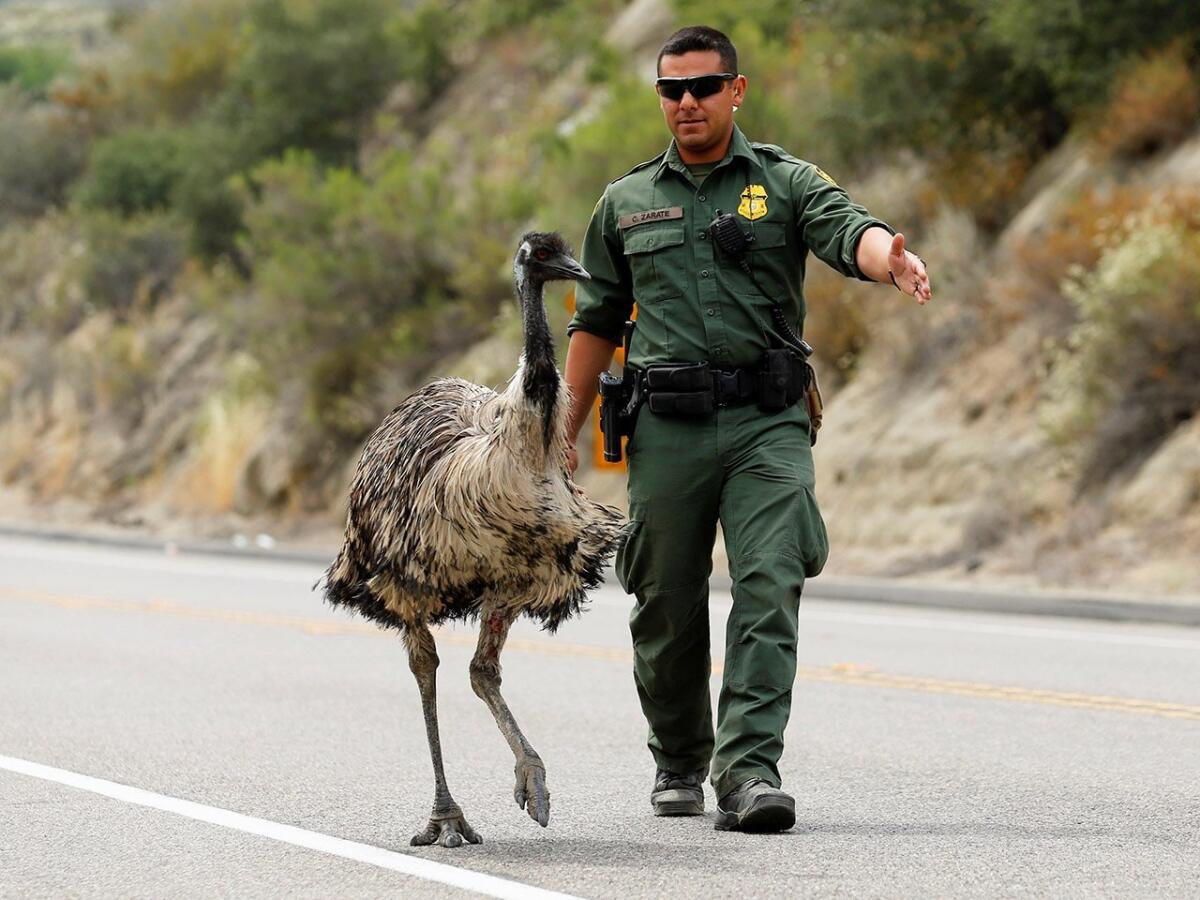
Larger animals posed a problem for many residents, and many got left behind. One family was able to evacuate with two cats and a dog, while the two emus and four ostriches were left inside their pens as the fire closed in.
Dean Chapman said his family had started raising the giant birds 16 years ago, hoping to market them “as a different type of red meat.” But the business failed, and “they’re very expensive pets now.”
As the fire spread, the ostriches remained locked in their pen and suffered no harm. But the emus escaped their enclosure. One ended up across the street on the property of a neighbor, who fired his gun into the air when an Animal Services officer arrived to get the bird.
The neighbor was taken into custody. The emu was returned home, but the bottoms of its feet were burned and the animal had to be put down, Chapman said. The second emu has yet to be found.
A happier fate awaited Kim and David Fuson’s menagerie of 55 miniature donkeys, four standard donkeys, two Lamancha goats, and two quarter horses.
The Campo residents own Fantasy Donkeys, which provides miniature donkeys for birthday parties, weddings and other functions. When Kim Fuson came home from work on Monday to discover a fire on the move, she was faced with the challenge of rapidly moving the animals to safer ground.
She posted a plea for help on the Brushfire Partyline/San Diego East County Facebook page, and help arrived. The Border Patrol came. The San Diego Humane Society sent humane officers and members of its Animal Rescue Reserve volunteer team. The county’s Department of Animal Services was on site. Animal lovers volunteered their trucks, trailers and paddocks. One man offered to bring in tanks of water, and another woman offered up her house if the couple and their nine cats and two dogs needed a place to stay.
“I was pretty panicked, but I went ahead and put a message out there asking if anybody had any horse trailers and could they help,” Fuson said. “The minute that hit, the response was so good. The Humane Society people were beyond wonderful. The Border Patrol was here. Animals Services was here. You never saw so many people in your life.”
In the end, the donkeys, horses and goats were evacuated to ranches in Lakeside and El Cajon. The animals came home on Friday to a farm that wasn’t touched by the fire and owners who were moved to tears by the humanity of humans.
“Everyone got out through the grace of God and all of the people who helped,” Fuson said, as she was cleaning up the farm in preparation for the big animal-owner reunion. “When things like this happen, you really lose your mind, and they were all so used to working in these kinds of situations, they would just hand you some Gatorade and string cheese and say, ‘We’ll take care of it.’ We cannot thank people enough.”
Staff writer Karla Peterson contributed to this report.
sandra.dibble@sduniontribune.com
Get Essential San Diego, weekday mornings
Get top headlines from the Union-Tribune in your inbox weekday mornings, including top news, local, sports, business, entertainment and opinion.
You may occasionally receive promotional content from the San Diego Union-Tribune.

